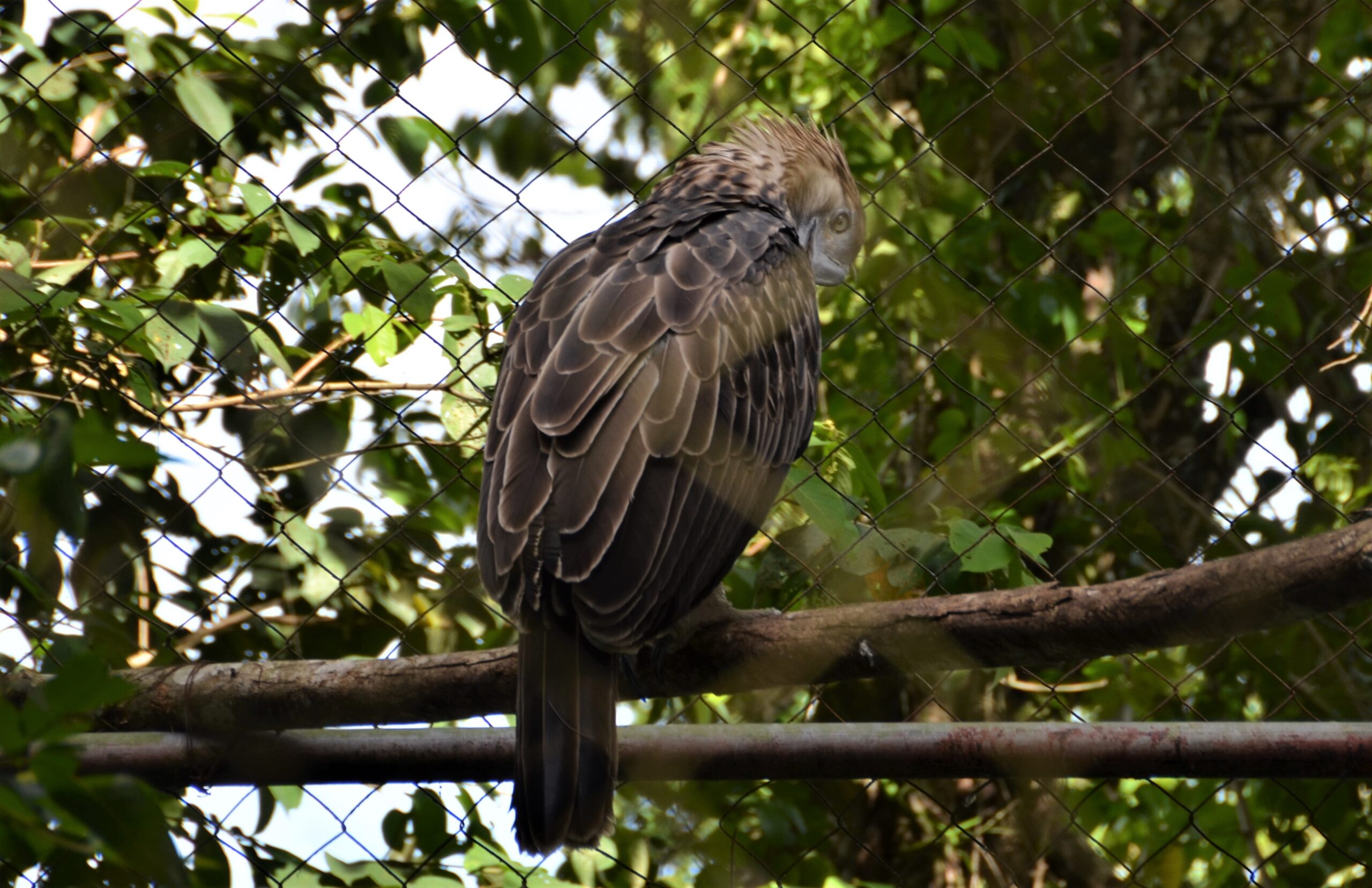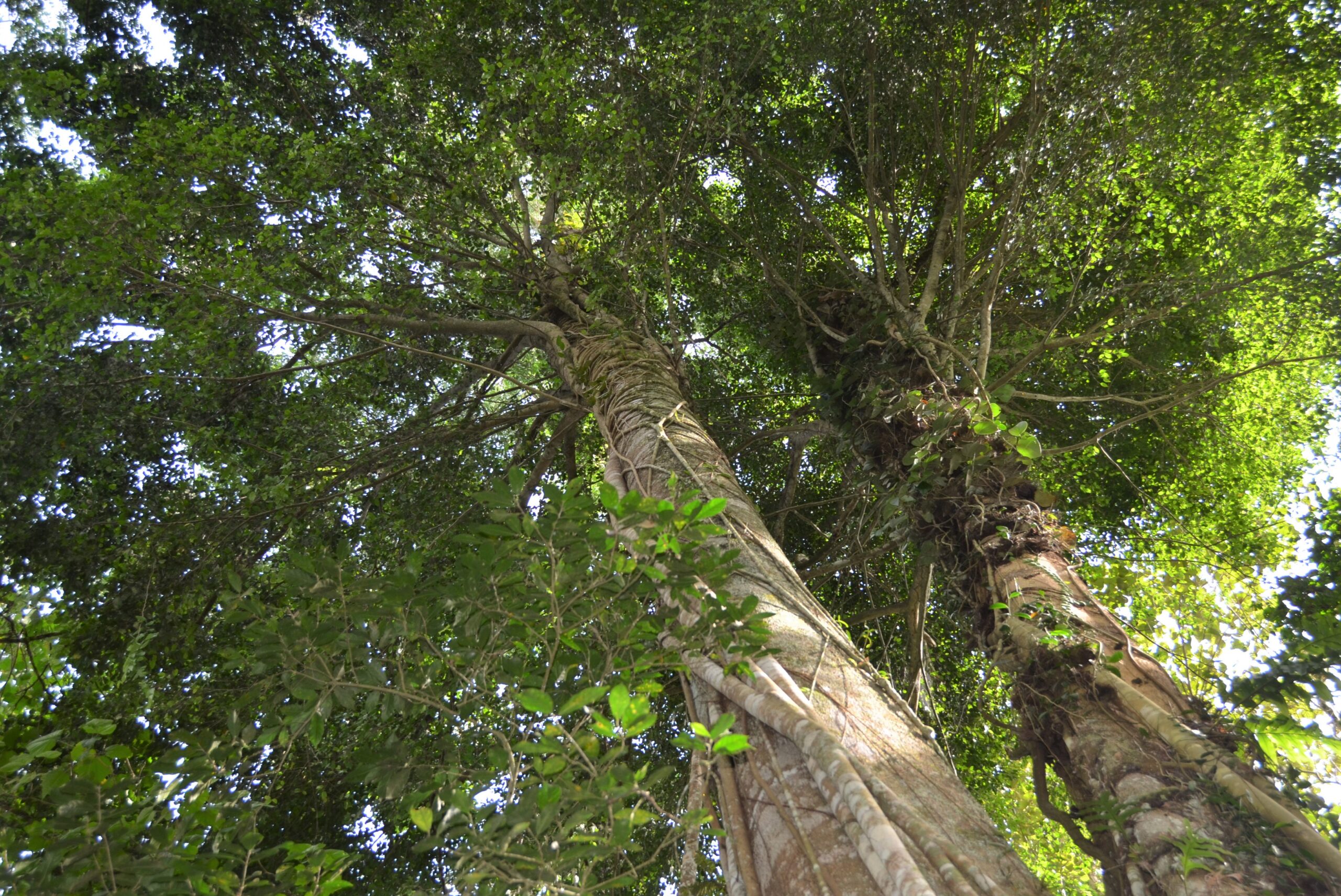Text and Photos by Henrylito D. Tacio
Since the Mounts Makabol-Alikoson Conservation Area (MMACA) in Davao City is a nesting site of the endangered Philippine eagle, several environmental groups and community members of barangay Salaysay are campaigning for the declaration of the area a critical habitat.
“The forests of the MMACA have been recorded as a nesting territory of a Philippine eagle since 1986,” said Rowell L. Taraya and Jaycson C. Ibañez of the Malagos-based Philippine Eagle Foundation (PEF).
Aside from PEF, the other green organizations batting for the MMACA to be proclaimed a critical habitat are Interfacing Development Interventions for Sustainability (IDIS), Sustainable Davao Movement, Ecoteneo, and Bantay Bukid.
During a recent press conference, a research team – who spent a total of 7,200 minutes or 120 hours searching and observing the national bird in the area – reported that they found an eagle pair, a six-month-old eagle, and a new eagle nest.
“The eagles were active within a 500-meter radius of the nest tree at Mount Makabol, specifically at the Panukuan area where a nest was located,” the team reported. “The nesting site on the balete tree is surrounded by three hamlets (sitios).”
The pair of Philippine eagles were frequently detected on six occasions. “This is only 4.5% of the total observation hours allotted during the expedition, which means these are not dwellers but permanent residents in the area,” the team said.
“Apart from the Philippine eagle, there are other threatened endangered species that are about to be extinct and need to be protected,” said Ibañez, who is PEF’s research and conservation director.
Another study, conducted by a team of researchers from the University of the Philippines-Mindanao (UP-Min), recorded 119 terrestrial vertebrate species: 88 birds, 16 amphibians, six reptiles, five bats, and four non-volant mammals. Of this total, 39 species are considered endemic in the country, and 23 of them can be found only in Mindanao.
The majority of the species found at MMACA are considered endangered and threatened. If they are left unprotected, they may become extinct. Their status is an indicator that conforms with the guidelines in declaring a place to be critical habitat.
Critical habitat is the specific areas within the geographic area occupied by the species at the time it was listed that contain the physical or biological features that are essential to the conservation of endangered and threatened species, and that may need special management or protection.
“We will turn over these results and formally propose to declare Mt. Makabol-Alikoson as a critical habitat to the Watershed Management Council and government authorities, especially (the regional office of the Department of Environment and Natural Resources) by the end of the year,” said Atty. Mark Peñalver, IDIS executive director. “We need the support of the public.”
It must be recalled that on August 18, 2021, a private land timber permit (PLTP) was issued, in which 121 native trees (22 agoho, four bagtikan, 14 lauan, 44 tanguile, and 35 ulian) would be cut at the MMACA.
When then Mayor Sara Z. Duterte learned of the situation, she personally wrote a letter to the regional office of the Department of Environment and Natural Resources (DENR) about it. “Please be informed that the City Government of Davao fully supports the request of both organizations,” she said, referring to the PEF and SDM.
Duterte enumerated several important issues on why PLTP should be canceled at MMACA: watershed, trees, and biodiversity. All these were discussed by Mayor Duterte in her letter.
A watershed is an area of land that drains or “sheds” water into a specific waterbody. The MMACA is classified by the Watershed Code of Davao City as “environmentally critical area.”
As such, the trees in the area should be protected. “A typical tree breathes out 250 to 400 gallons of water per day through its leaves, humidifying the air,” Rappler’s Pia Ranada explained. “This process, called evapotranspiration, is responsible for most of the rain that falls inland, far from oceans. Thus, without trees, there is no rain and it is rain that supplies much of the freshwater humans need to live.”
Duterte said, “the forest area of the MMACA replenishes the aquifers of the Suawan-Kulafu-Sub-Watershed within the Davao City River Basin.”
The MMACA is also a biodiversity-rich place. “As a biodiversity area, the MMACA is home to various vulnerable species of birds and other wildlife endemic to Mindanao,” Duterte wrote.
When American Professor James W. Grier of the Department of Biological Sciences in North Dakota State University learned of the issuance of “a permit to harvest old-growth trees for commercial purposes near a long-established, productive, and well-studied Philippine eagle nesting territory,” he wrote an open letter which was shared by Dennis Salvador, PEF’s executive director.
“That area should be left in its natural state to the fullest extent possible, including leaving old and even fallen trees naturally in place,” said Prof. Grier
Prof. Grier had first-hand experience with the Philippine eagle and was among the first to travel to and help study the nesting eagles at barangay Salaysay.
Studies conducted by the UN Food and Agriculture Organization (FAO) showed that a pair of Philippine eagles needs at least 7,000 to 13,000 hectares of forest as a nesting territory.
“The forest is its only habitat,” Salvador pointed out. “Without forest, the species cannot survive over the long term.”
The neighboring mountain ranges of MMACA are Mount Apo, Mount Sinaka, and Mount Mahuson, all of which are also considered nesting sites of Philippine eagles.
The Philippine eagle – known in the science world as Phithecophaga jefferyi and described by famed American aviator Charles Lindbergh as “the world’s noblest flier” – was declared by then President Fidel V. Ramos as national bird (thereby dislodging maya as such).
The Philippine eagle is second only to the Madagascar sea eagle in rarity. In size, it beats the American bald eagle; it is the world’s second biggest after the Harpy eagle of Central and South America.
The bird icon was being collected in the country as early as 1703, but it was not until 1896 that it was “discovered” in Samar by the English naturalist John Whitehead, who called it the “Great Philippine eagle.”
Unlike most animals and humans, Philippine eagles are monogamous and bond for life. Once an eagle reaches sexual maturity – at around five years for female and seven years for males – it is bound for life with its mate. They can be seen soaring in pairs in the skies.
Salvador said massive deforestation has turned the Philippine eagle into an endangered species. “Deforestation is terrible,” he deplored. “The Philippine eagle has become a critically endangered species because the loss of the forest has made it lose its natural habitat.”



